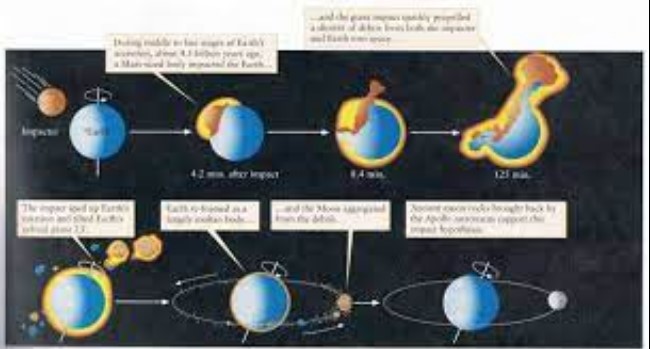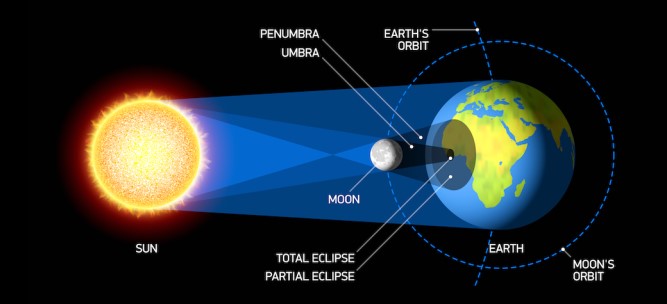The relationship between the sun, moon, and Earth is an important one. It influences the cycle of the tides, the length of days, and even the climate of the planet.
In this blog, we will explore the intricate ways in which the sun, moon, and Earth interact, and how this relationship affects the habitat of our planet.
How the sun, moon, and earth interact and affect each other

The sun, moon, and earth are like a cosmic dance of connectedness, with each entity influencing the others in mysterious and beautiful ways. The sun provides the earth with the energy needed to sustain life, while the moon’s gravitational pull creates the ocean’s tides and the changing of the seasons.
Meanwhile, the earth’s rotation creates day and night, and its orbit around the sun creates the cycle of the year. The relationship between the sun, moon, and earth is an intricate one, with each part playing an essential role in the grand scheme of things. Without one, the others would be unable to exist.
Together, they act as a complex system, providing the perfect balance for life to thrive.
The science of sun, moon, and earth tides

The relationship between the sun, moon, and Earth is not an unfamiliar one. In fact, the effects of these celestial bodies on our planet are quite profound.
Through the process of gravitational attraction, the moon and sun are responsible for the formation of tides on Earth. Tides are the rise and fall of sea levels, and the rise and fall of the Earth’s surface. This phenomenon is caused by the combined gravitational pull of the sun and the moon.
The Earth and moon rotate around a common center of gravity, which causes the shape of the ocean to be altered due to the forces of attraction. As the moon and sun move through their orbits, they create a tug-of-war effect on the Earth’s surface.
The science of sun, moon, and earth tides is an interesting one, as it explains how the relationship between these three bodies affects our planet.
How the moon causes the seasons and different weather patterns

The relationship between the sun, moon, and Earth is a key factor in understanding the seasons and different weather patterns. The sun’s energy warms the Earth and the moon’s gravitational pull causes the oceans to move. The sun’s energy, combined with the moon’s gravitational pull, cause the Earth to tilt on its axis as it moves around the sun.
The sun’s energy, combined with the moon’s gravitational pull, cause the Earth to tilt on its axis as it moves around the sun. This tilt is what causes the different seasons and weather patterns. During the summer, the northern hemisphere is tilted towards the sun, resulting in warmer temperatures.
During the winter, the northern hemisphere is tilted away from the sun, resulting in cooler temperatures. The moon also affects the tides, which can lead to flooding and other weather patterns.
The impact of sun, moon, and earth on human life

The relationship between the sun, moon, and earth is one of the most complex and fascinating interactions in the universe. Our planet’s relationship with these celestial bodies affects the way we live our lives each and every day.
The sun provides us with warmth and energy, while the moon controls the tides and helps us tell time. Meanwhile, the gravitational pull of the earth pulls the sun and moon into orbit, creating the cosmic dance that is essential for life on our planet.
All of these elements combine to create a powerful relationship that affects every aspect of our lives.
Ancient beliefs, myths, and symbols related to sun, moon, and earth

The relationship between the sun, moon, and earth has long been a source of fascination and fascination for many cultures throughout history. Ancient belief systems, myths, and symbols often revolve around this relationship, as it has been used to explain natural phenomena, such as the tides, eclipses, and meteor showers.
For some ancient cultures, the sun, moon, and earth were seen as the three main forces in the universe, and were often depicted in artwork and symbols to represent these forces. In some cultures, it was believed that the sun and moon were gods, and that the earth was their home. In other cultures, the relationship between the sun, moon, and earth was seen as a complex one, with the sun and moon representing different aspects of the same force.
No matter the belief system, the relationship between the sun, moon, and earth has been a source of inspiration for many cultures throughout history.
Final Touch
The relationship between the Sun, Moon, and Earth is a complex one that has fascinated people since ancient times. The Sun provides the energy for life on Earth and is the source of day and night. The Moon reflects the Sun’s light to create the phases of the moon and affects the tides on Earth.
The Earth’s rotation and tilt cause the seasons of the year. All of these factors demonstrate the interconnectedness of the Sun, Moon, and Earth and the importance of their relationship in our lives.

